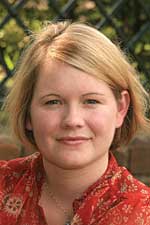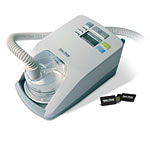Fisher & Paykel Healthcare’s SleepStyle 200 Auto CPAP
- By Elisha Bury
- Sep 01, 2008

When developing its new auto-titrating CPAP, Fisher & Paykel Healthcare was looking for a way to differentiate the product from others of its kind.
The company had been working on a technology that would use flow to continuously monitor patients’ breathing patterns, thereby sensing the change between sleep and awake. More than just a ramp feature, this SensAwake technology, which became the cornerstone of the new SleepStyle 200 Auto CPAP, would actually know when the patient was awake and reduce pressure.
“If you have a high confidence that the patient is awake, then you know that they don’t necessarily need pressure at all,” explains Christian Kiely, Fisher & Paykel Healthcare’s marketing manager. “That’s when SensAwake would activate. It would bring the pressure down to the lowest range set on the device and would aid that transition back to sleep, and then the auto-algorithm would continue monitoring and treating the patient.”
Ultimately, the goal is to improve compliance by upping the ante on patient comfort. In fact, Kiely says that patients who arouse during the night on therapy are most at risk for abandoning therapy because they may not be able to tolerate the pressure.
The debut of the product, which was highlighted at the Associated Professional Sleep Societies’ annual meeting in June, comes at an important juncture in home care. With the release of the new local coverage determinations for positive airway pressure (PAP) devices, which require proof of clinical benefit, HME providers have an additional stake in making sure their patients can tolerate CPAP therapy. While the SleepStyle 200 Auto CPAP works for any patient requiring auto-titration, it is especially good for patients who have trouble getting adjusted to CPAP therapy, Kiely says.
“The reason I say that is because there is not a fixed time period of ramp or delay in the start of the

therapy,” he says. “When the device is turned on, it will stay at the minimum range of pressure until it begins to detect events. If we think about it, those sleep-disordered breathing events will only begin to occur when the patient is asleep. So, effectively, when the patient is awake, they’re going to get the lowest possible pressure they can get. … That’s going to really help that patient get acclimated to the therapy and set the stage for long-term compliance.”
The device also incorporates a Fisher & Paykel Healthcare classic — Ambient Tracking Plus. The heated humidification technology maximizes humidity at ambient room temperature while also minimizing condensation. Since heated humidification has been shown to improve acceptance and compliance of therapy, that feature is a major plus.
In addition to creature comforts for patients, the SleepStyle 200 Auto CPAP also takes into consideration easing hassles for home care providers. The device records data via a SmartStick, a USB stick that eliminates the need for a card reader. That means, data moves freely, making life a little easier for providers, Kiely says. Also, the device employs Performance Maximizer, a new efficacy reporting software that streamlines data analysis.
In theory, with home sleep testing, sales of auto-titrating CPAPs should pick up, as titration would likely be done in the home. That could open doors for providers looking to build up their Auto CPAP offerings.
At press time, the SleepStyle 200 Auto CPAP was awaiting FDA clearance. The device is expected to be available later this year.
Fisher & Paykel Healthcare15365 Barranca Parkway
Irvine, CA 92618
(800) 446-3908
www.fphcare.com
This article originally appeared in the September 2008 issue of HME Business.
About the Author
Elisha Bury is the editor of Respiratory Management.